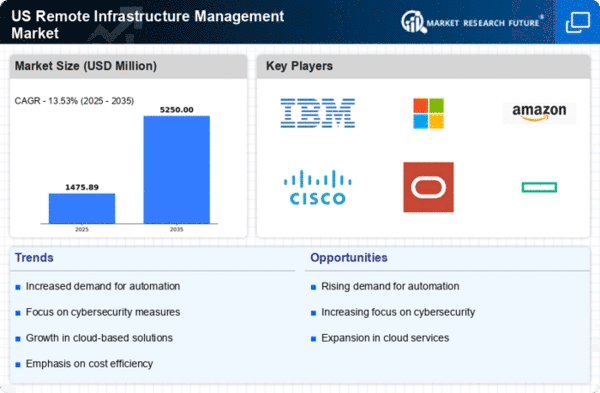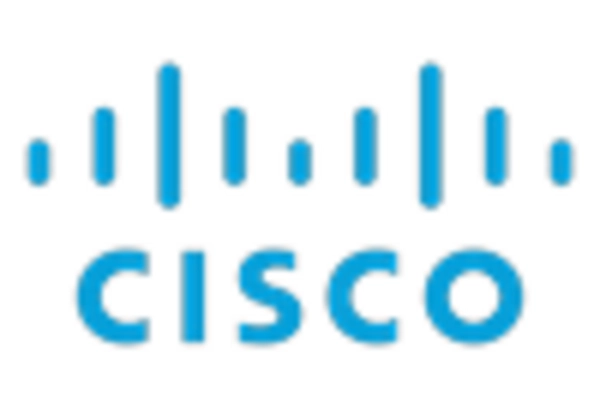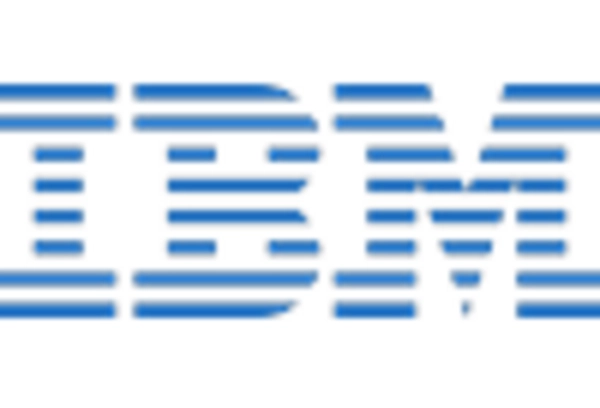Shift Towards Remote Work Culture
The shift towards a remote work culture significantly influences the remote infrastructure-management market. As organizations adapt to flexible work arrangements, the need for reliable and efficient infrastructure management solutions becomes paramount. This transition has led to an increased reliance on remote monitoring and management tools, which facilitate seamless operations regardless of employee location. Data suggests that approximately 70% of companies in the US have adopted some form of remote work, further driving the demand for infrastructure solutions that support this model. Consequently, the remote infrastructure-management market is poised for growth as businesses seek to enhance their operational capabilities in this evolving work environment.
Growing Demand for Cost Efficiency
The remote infrastructure-management market experiences a notable surge in demand for cost efficiency among organizations. Companies are increasingly seeking solutions that minimize operational expenses while maximizing productivity. This trend is driven by the need to allocate resources more effectively, particularly in a competitive landscape. According to recent data, businesses that implement remote infrastructure management solutions can reduce IT costs by up to 30%. This financial incentive encourages organizations to adopt these technologies, thereby propelling market growth. As firms strive to streamline their operations, the remote infrastructure management market is crucial for achieving these objectives, indicating a robust trajectory for future expansion.
Regulatory Compliance and Data Governance
Regulatory compliance and data governance are critical drivers in the remote infrastructure-management market. Organizations face increasing scrutiny regarding data protection and privacy regulations, necessitating robust infrastructure management solutions. Compliance with standards such as GDPR and HIPAA requires effective monitoring and management of IT resources. As a result, companies are investing in remote infrastructure management tools that ensure adherence to these regulations while safeguarding sensitive information. The market is projected to grow as businesses prioritize compliance, with estimates indicating a potential increase of 25% in demand for these solutions over the next few years. This trend underscores the importance of governance in shaping the remote infrastructure-management market.
Increased Focus on Business Continuity Planning
The increased focus on business continuity planning is a significant driver in the remote infrastructure-management market. Organizations recognize the necessity of maintaining operations during unforeseen disruptions, prompting investments in robust infrastructure management solutions. Effective remote management tools enable businesses to ensure continuity by providing real-time monitoring and rapid response capabilities. Data indicates that companies with comprehensive continuity plans are 50% more likely to recover quickly from disruptions. This awareness fosters a growing demand for remote infrastructure management solutions, as firms aim to enhance their resilience and operational stability. Consequently, the remote infrastructure-management market is likely to witness sustained growth as organizations prioritize continuity in their strategic planning.
Technological Advancements in Infrastructure Management
Technological advancements play a pivotal role in shaping the remote infrastructure-management market. Innovations in cloud computing, artificial intelligence, and machine learning are transforming how organizations manage their IT resources. These technologies enable more efficient monitoring, predictive maintenance, and automated responses to potential issues. As businesses increasingly adopt these advanced solutions, the market is expected to expand significantly. Recent studies indicate that the integration of AI in infrastructure management can enhance operational efficiency by up to 40%. This trend highlights the potential for technological evolution to drive growth in the remote infrastructure-management market, as organizations seek to leverage cutting-edge tools for improved performance.

















Leave a Comment